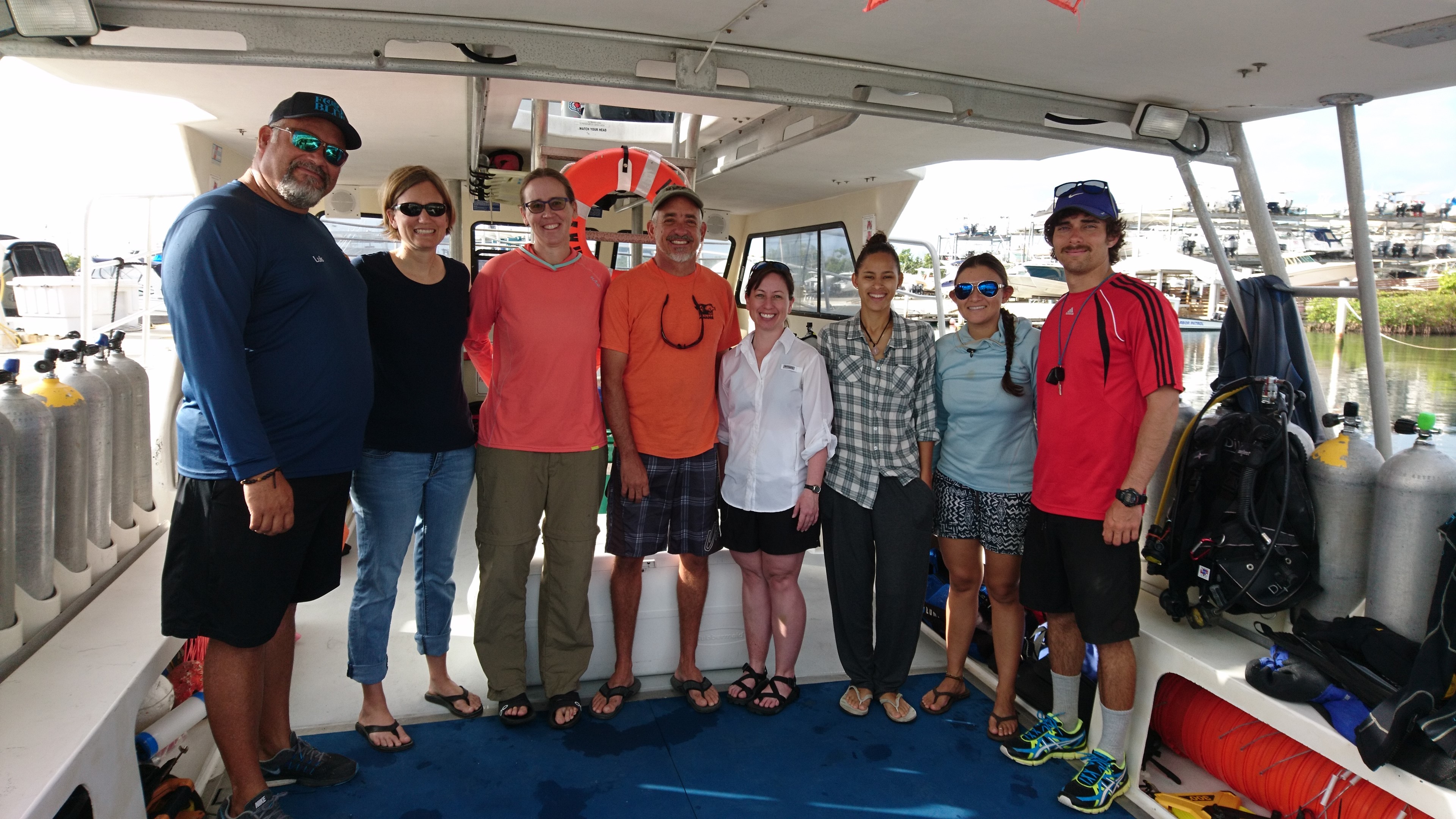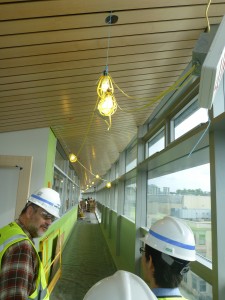
When Shay Viehman completed her Ph.D. in Marine Science and Conservation at the Duke University Marine Lab in 2017 on wave energy impacts to coral reefs, little did she know that in less than a year she would be applying that knowledge to coral reefs damaged in Puerto Rico from Hurricane Maria. “I investigated how new corals recover (or don’t) on reefs that were destroyed by ships running aground on them, and how that recovery potential was affected by wave energy. Coral reef destruction from hurricanes is a very similar scenario on a much more enormous scale” says Shay.

Shay currently works as a Research Ecologist for the National Oceanic and Atmospheric Administration (NOAA) at their laboratory in Beaufort, NC. After Hurricane Maria hit Puerto Rico in September 2017, the Puerto Rico Department of Natural and Environmental Resources (PR-DNR) and NOAA worked together to assess damage to coral reefs and to perform emergency stabilization of loose and broken corals. Many of the coral species that were impacted by the hurricane, such as elkhorn coral, are listed under the US Endangered Species Act. These imperiled corals provide a critical ecosystem service by protecting natural shoreline from wave energy. This project is part of a larger response supported by the Federal Emergency Management Agency (FEMA) to address damage to Puerto Rico’s natural and cultural resources. Shay is encouraged that federal agencies like FEMA and the Army Corps of Engineers are considering the benefits of incorporating green infrastructure (i.e. nature-based) with the traditional gray infrastructure (i.e. man-made) for coastal protection.
Shay traveled to Puerto Rico in late February to kick off the efforts of the field team, most of whom live in Puerto Rico. “They swapped stories of what it was like to be in the worst of the hurricane,” said Shay, “Some of them had relocated from one house to another during the storm due to flooding or a roof blowing off. Six months after the hurricane, many places still didn’t have power and were running on generator. These infrastructure limitations and living challenges added to the already complex logistics of field work.” The field team assessed coral damage on reefs around Puerto Rico and performed emergency stabilization of damaged reefs. Fortunately a collaborator at the University of Puerto Rico created models of wave energy during Hurricane Maria. These data guided the field teams, with the expectation that the more wave energy a location experienced, the greater likelihood of damage to the coral reefs. After the assessment team located critical sites of loose or broken coral, the triage team used cement to reattach live coral pieces back onto the reef, providing emergency stabilization of loose fragments. “This is a great partnership that brings together the strengths of the Puerto Rican coral restoration team, PR-DNER, and NOAA for the benefit of the local economy, now and in the future,” noted Shay.

Now back in Beaufort, Shay continues to lead the assessment project as it wraps up. The field team is set to complete its work in the next few weeks. The shoreside team is now conducting analyses and developing visualizations of their data, prior to making recommendations for future restoration efforts. Shay feels fortunate that her dissertation research was connected so directly to this effort, but is also appreciative of many other aspects of her experience in graduate school. “Duke has wonderful resources in both quantitative ecology and data visualization that have allowed me to communicate science effectively to decision-makers. I was able to connect so much of what I learned in graduate school to this experience. I appreciate being able to give back to Puerto Rico and my colleagues there after I’ve been doing research there for so many years.”




